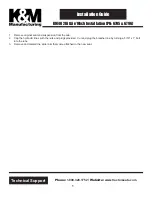
Factors Influencing Capacity
Battery capacity consists both of nominal capacity and actual capacity, for nominal capacities of
the FT series battery please refer to Table 1-1. Actual capacity is the real quantity of electricity
battery discharge under certain condition, it equals to discharge current multiplied by discharge
time, the unit is Ah.
Battery capacity is directly related to discharge current, end voltage and discharge
temperature.
Temperature Effect on Battery Capacity
Figure 3-1 describes temperature effect on battery capacity (C10). For example, if temperature
falls from 25
℃
to 0
℃
, battery capacity will be 85% of the nominal capacity, low temperature will
cause long term charge shortage, negative plates will be irreversibly sulfated and as a result the
battery cannot be used normally.
As temperature rises, battery capacity will increase to a certain point. For example, if temperature
rises from 25
℃
to 35
℃
, battery capacity will be approximately 105% of the nominal capacity.
From 35
℃
to 50
℃
, the capacity increase is very low and if temperature rises beyond 50
℃
, there
is no increase in battery capacity.
Figure 3-1 temperature effect on battery capacity curve
O
pe
ra
tio
n
an
d
m
ai
nt
en
an
ce
14
Summary of Contents for sp series
Page 1: ......












































